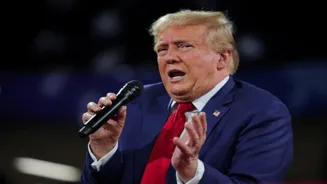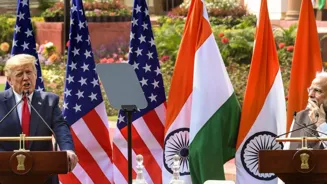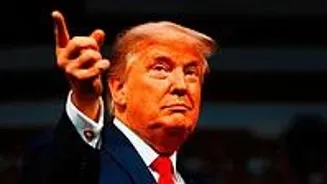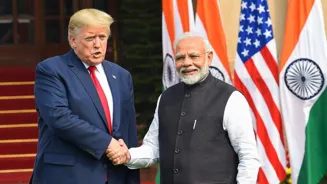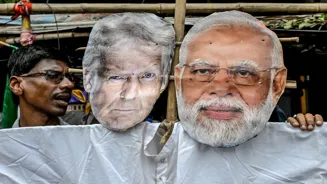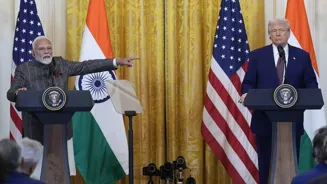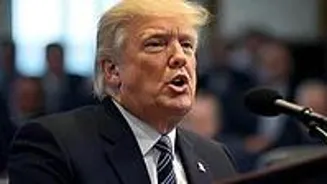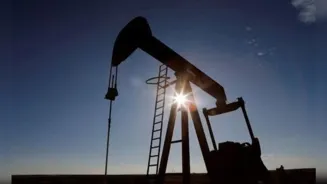What is the story about?
US President Donald Trump has imposed 50 per cent tariffs on India for doing business with Russia.
However he is mistaken if he thinks the rest of the world will be insulated from the fallout given that India is a vital part
of the global economy.
Trump who previously called India a ‘tariff king’, has taken a harsh stand on India recently.
Some think Trump is merely using pressure tactics to try to drive a trade deal between the two countries on favourable terms to the United States.
But how will Trump’s tariffs on India hurt the rest of the world too?
Let’s take a closer look
Some experts think Trump’s tariffs could cause India’s GDP to shrink between 0.2 and 0.4 per cent.
Sonal Badhan, Economics
Specialist at Bank of Baroda,has claimed the tariff, if reduced to 25-26 per cent, could bring down India’s GDP by .2 per cent.
"There appears to be downside risk to our growth forecast of 6.4-6.6 per cent if lower rates are not negotiated," Badhan said.
She said garments, precious stones, pharmaceuticals, auto parts, electronics, and MSMEs would most likely be affected.
Other analysts said it could impact the GDP far more. Bloomberg Economics said the tariffs could bring down the GDP as much as 1 per
cent and reduce shipments to the US as much as 60 per cent.
“The overall hit to GDP could be even higher at 1.1 per cent over the medium term” once tariffs on sectors such as pharmaceuticals and electronics are announced, analysts Chetna Kumar and Adam Farrar wrote as per the outlet.
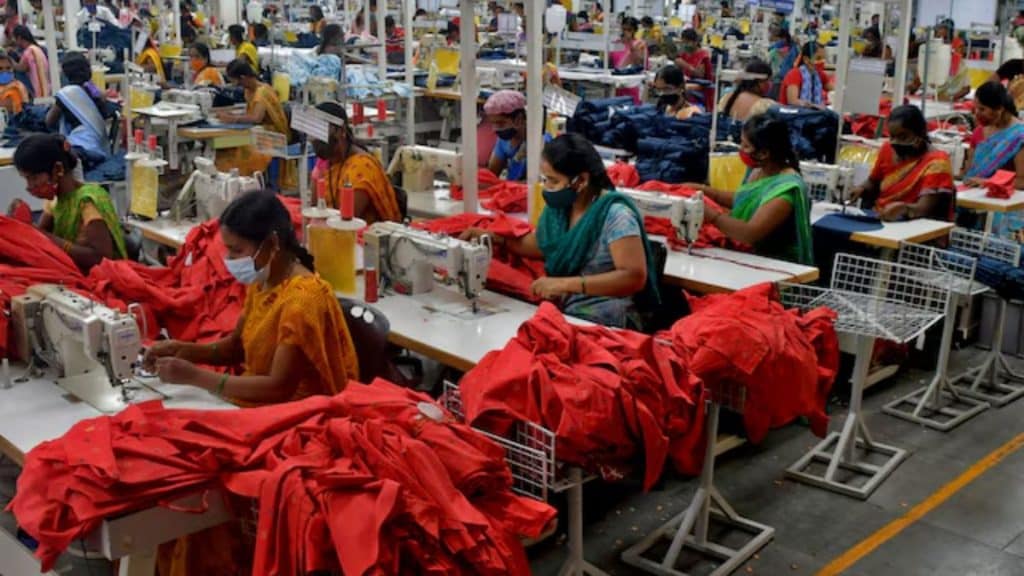
Ajay Bagga, a banking and market expert, called the development a huge
blow for India.
"India is now hit with 50 per cent tariffs, but frankly, once it crossed 25 per cent, it didn't matter. It could be 1,000 per cent or 5,000 per cent; there's no trade possible anymore," Bagga said.
He said exporters would be hit particularly hard.
"If $1 billion worth of textile exports are halted, it directly impacts around 100,000 workers," Bagga added.
This naturally would have a spill over affect to the world.
GTRI founder Ajay Srivastav said this would make Indian goods far more
expensive in the US.
Textiles and clothing, gems and jewellery, shrimp, leather and footwear, chemicals and electrical and mechanical machinery would be most affected.
This would put exporters at a major disadvantage compared to their competitors in other countries.
Federation of Indian Export Organisations (FIEO), calling the move “extremely shocking”, said around 55 per cent of India’s exports to the US could be affected.
Let’s take a look at the Indian economy’s
contribution to the world. RBI governor Sanjay Malhotra on Wednesday described India’s economy as ‘robust’. He noted that India was growing at 6.5 per cent compared to 4 per cent for the rest of the world.
“We are contributing about 18 per cent to the total global growth which is more than US where the contribution is expected to be much lesser, I think about 11 per cent or something”, Malhotra said.
Malhotra said some of the impact of US tariffs had been built in to the RBI’s revised growth forecast.
The central bank had preciously cut its forecast from 6.7 per cent to 6.5 per cent.
“However, there is still a lot of uncertainty and it is very difficult to predict the impact going forward”, Malhotra said. He added that the central bank would keep an eye on things and make moves accordingly.
Though India has saved billions of dollars over the past few years by buying cheaper crude from Russia, the discount isn’t that much these days.
In 2023, Russia was
offering India a massive discount of $23 per barrel. This May, Indian buyers were paying just $4.50 less per barrel than crude imported from Saudi Arabia.
Though India could easily pivot to buying crude from Iraq and Saudi Arabia, who have historically been India’s suppliers in West Asia, this would only hurt the world.
As noted before, India prior to the Ukraine war barely bought any crude from Russia.It began doing so with the encouragement of the US after war broke out. Brent crude prices had risen to $137 (Rs
12,000) per barrel in March 2022 after fears that global markets would be cut off from Russian oil.
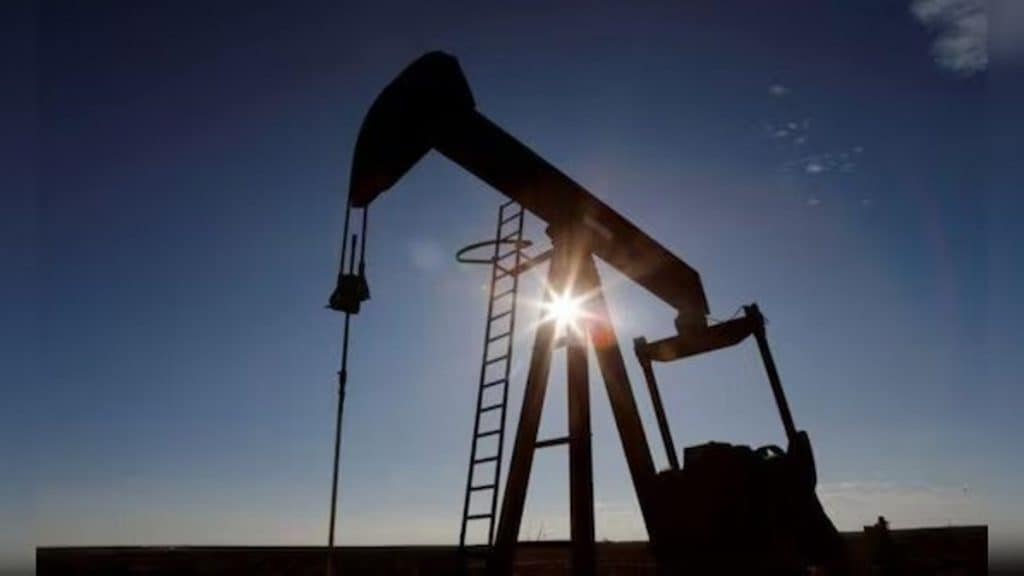
Sources have said prices, which are currently below $70 (Rs 6,127) per barrel, could increase to as much as $200 (Rs 17,560) per barrel if India were to stop buying Russian oil.
“Had Indian oil refiners not absorbed discounted Russian crude, combined with OPEC production cuts of 5.86 million
barrels per day, global oil prices could have surged well beyond the March 2022 peak of 137 dollars per barrel, intensifying inflation globally,” sources said.
Shilan Shah of Capital Economics, told Bloomberg the cost of not buying crude from Russia is “not actually that big”.
“It feels like a political decision rather than an economic one. India doesn’t want to be seen caving to Trump’s demands. India and Russia have pretty longstanding trade relations, which I think India would be keen to maintain,” he said.
Experts have criticised Trump’s approach.
“Everyone understands Trump’s aim is to try and pressure Putin, but to do it with a gun on India’s shoulder is not going down well with New Delhi,” Bloomberg quoted Vandana Hari, founder of consultancy Vanda Insights, as saying.
However, some say acrimony can still be avoided.
“There may be more symbolism than substance to the extra 25 per cent tariff on imports from India,” Brian Jacobsen, chief economist at Annex Wealth Management, told CNBC.“The
duty does not into effect for 21 days. That’s quite a wide window to provide an offramp.”
With inputs from agencies
However he is mistaken if he thinks the rest of the world will be insulated from the fallout given that India is a vital part
Trump who previously called India a ‘tariff king’, has taken a harsh stand on India recently.
Some think Trump is merely using pressure tactics to try to drive a trade deal between the two countries on favourable terms to the United States.
But how will Trump’s tariffs on India hurt the rest of the world too?
Let’s take a closer look
Impact on Indian GDP
Some experts think Trump’s tariffs could cause India’s GDP to shrink between 0.2 and 0.4 per cent.
Sonal Badhan, Economics
"There appears to be downside risk to our growth forecast of 6.4-6.6 per cent if lower rates are not negotiated," Badhan said.
She said garments, precious stones, pharmaceuticals, auto parts, electronics, and MSMEs would most likely be affected.
Other analysts said it could impact the GDP far more. Bloomberg Economics said the tariffs could bring down the GDP as much as 1 per
“The overall hit to GDP could be even higher at 1.1 per cent over the medium term” once tariffs on sectors such as pharmaceuticals and electronics are announced, analysts Chetna Kumar and Adam Farrar wrote as per the outlet.

Textiles and clothing, gems and jewellery, shrimp, leather and footwear, chemicals and electrical and mechanical machinery would be most affected. Reuters
Ajay Bagga, a banking and market expert, called the development a huge
"India is now hit with 50 per cent tariffs, but frankly, once it crossed 25 per cent, it didn't matter. It could be 1,000 per cent or 5,000 per cent; there's no trade possible anymore," Bagga said.
He said exporters would be hit particularly hard.
"If $1 billion worth of textile exports are halted, it directly impacts around 100,000 workers," Bagga added.
This naturally would have a spill over affect to the world.
GTRI founder Ajay Srivastav said this would make Indian goods far more
Textiles and clothing, gems and jewellery, shrimp, leather and footwear, chemicals and electrical and mechanical machinery would be most affected.
This would put exporters at a major disadvantage compared to their competitors in other countries.
Federation of Indian Export Organisations (FIEO), calling the move “extremely shocking”, said around 55 per cent of India’s exports to the US could be affected.
How Indian economy affects the world
Let’s take a look at the Indian economy’s
“We are contributing about 18 per cent to the total global growth which is more than US where the contribution is expected to be much lesser, I think about 11 per cent or something”, Malhotra said.
Malhotra said some of the impact of US tariffs had been built in to the RBI’s revised growth forecast.
The central bank had preciously cut its forecast from 6.7 per cent to 6.5 per cent.
“However, there is still a lot of uncertainty and it is very difficult to predict the impact going forward”, Malhotra said. He added that the central bank would keep an eye on things and make moves accordingly.
Crude prices would increase
Though India has saved billions of dollars over the past few years by buying cheaper crude from Russia, the discount isn’t that much these days.
In 2023, Russia was
Though India could easily pivot to buying crude from Iraq and Saudi Arabia, who have historically been India’s suppliers in West Asia, this would only hurt the world.
As noted before, India prior to the Ukraine war barely bought any crude from Russia.It began doing so with the encouragement of the US after war broke out. Brent crude prices had risen to $137 (Rs

, India prior to the Ukraine war barely bought any crude from Russia. It began doing so with the encouragement of the US.
Sources have said prices, which are currently below $70 (Rs 6,127) per barrel, could increase to as much as $200 (Rs 17,560) per barrel if India were to stop buying Russian oil.
“Had Indian oil refiners not absorbed discounted Russian crude, combined with OPEC production cuts of 5.86 million
Shilan Shah of Capital Economics, told Bloomberg the cost of not buying crude from Russia is “not actually that big”.
“It feels like a political decision rather than an economic one. India doesn’t want to be seen caving to Trump’s demands. India and Russia have pretty longstanding trade relations, which I think India would be keen to maintain,” he said.
Experts have criticised Trump’s approach.
“Everyone understands Trump’s aim is to try and pressure Putin, but to do it with a gun on India’s shoulder is not going down well with New Delhi,” Bloomberg quoted Vandana Hari, founder of consultancy Vanda Insights, as saying.
However, some say acrimony can still be avoided.
“There may be more symbolism than substance to the extra 25 per cent tariff on imports from India,” Brian Jacobsen, chief economist at Annex Wealth Management, told CNBC.“The
With inputs from agencies
Do you find this article useful?
